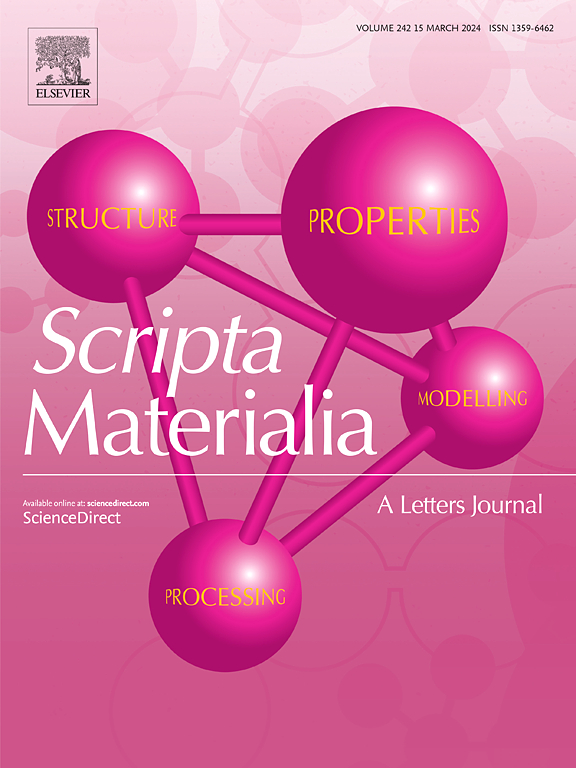合金对超高强度钢氢扩散影响的高通量评价
IF 5.6
2区 材料科学
Q2 MATERIALS SCIENCE, MULTIDISCIPLINARY
引用次数: 0
摘要
氢脆是制约汽车用超高强度钢发展的关键因素。为了提高超高强度钢抗HE合金设计的效率,本研究提出了一种高通量方法,利用扫描开尔文探针力显微镜与扩散多重技术相结合,测量马氏体钢中的氢扩散系数。通过分析Cr和Mo含量变化的区域,我们发现这些溶质引起了细微的组织变化,减小了晶粒尺寸和低角晶界分数,增加了高角晶界分数。随着Cr和Mo含量的增加,氢的扩散系数减小,这主要是由于晶格畸变造成的,其中Mo的原子半径较大,对氢的扩散系数影响更大。在EBSD、HADDF和统计分析的支持下,这些发现阐明了溶质合金化对氢扩散系数降低的影响,为快速筛选和优化合金提供了强有力的框架。本文章由计算机程序翻译,如有差异,请以英文原文为准。

High-throughput evaluation of alloying effect on hydrogen diffusion of ultra-high strength steel
Hydrogen embrittlement is a critical factor limiting the development of ultra-high-strength steel for automotive applications.To enhance the efficiency of alloy design for HE resistance in ultra-high-strength steel, this study presents a high-throughput approach to measure hydrogen diffusion coefficients in martensitic steels using scanning Kelvin probe force microscopy integrated with diffusion multiple techniques. By analyzing regions with varying Cr and Mo contents, we demonstrate that these solutes induce subtle microstructural changes, reducing grain size and low-angle grain boundary fractions while increasing high-angle grain boundaries. The hydrogen diffusion coefficient decreases with higher Cr and Mo contents, primarily due to lattice distortions, with Mo showing a stronger effect owing to its larger atomic radius. Supported by EBSD, HADDF, and statistical analyses, these findings elucidate the influence of solute alloying on the reduction of the hydrogen diffusion coefficient, providing a robust framework for rapid alloy screening and optimization.
求助全文
通过发布文献求助,成功后即可免费获取论文全文。
去求助
来源期刊

Scripta Materialia
工程技术-材料科学:综合
CiteScore
11.40
自引率
5.00%
发文量
581
审稿时长
34 days
期刊介绍:
Scripta Materialia is a LETTERS journal of Acta Materialia, providing a forum for the rapid publication of short communications on the relationship between the structure and the properties of inorganic materials. The emphasis is on originality rather than incremental research. Short reports on the development of materials with novel or substantially improved properties are also welcomed. Emphasis is on either the functional or mechanical behavior of metals, ceramics and semiconductors at all length scales.
 求助内容:
求助内容: 应助结果提醒方式:
应助结果提醒方式:


